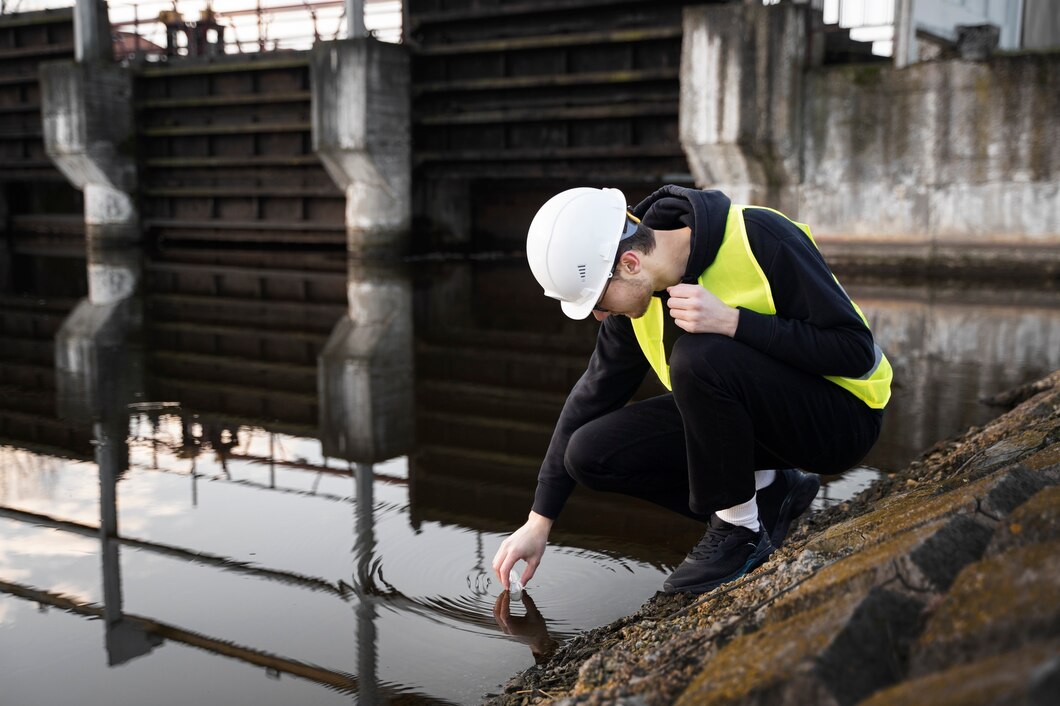Welcome to the world of high-pressure die casting, where molten metal meets precision molds and exceptional products are born! If you’ve ever wondered how intricate shapes and complex designs come to life in countless objects around us, from automotive parts to electronic components, then this blog post is for you. Today, we’re diving deep into the fascinating high pressure die casting process – an ingenious method that combines immense pressures with a touch of magic – resulting in durable, lightweight, and flawless creations that continue to shape our modern world. So fasten your seatbelt and get ready to uncover the secrets behind this remarkable manufacturing technique!
History and Evolution of the High Pressure Die Casting Process
A high pressure die casting process, with roots dating back over a century, emerged as cutting-edge technology in the late 1800s to meet the demand for precise metal components. Initial attempts using low-pressure methods were slow and limiting. In the early 20th century, engineering advancements led to high-pressure die casting, revolutionizing the industry with faster production and superior component quality. This technique involves injecting molten metal into a steel mold at high speeds and pressures, creating intricate shapes with tight tolerances.
Manufacturers refined the process with innovations like automated systems, computer-aided design (CAD), and precise temperature control, enhancing efficiency while preserving part integrity. Today, high-pressure die casting is essential across industries, enabling mass production of durable, complex designs for automotive, aerospace, and consumer electronics. The evolution continues as researchers explore new alloys, improve cooling techniques, and develop sustainable practices, promising even greater possibilities for this remarkable manufacturing process.
How Does High Pressure Die Casting Work?
High-Pressure Die Casting (HPDC) is an efficient method for creating complex metal parts. Here’s a summary of the process:
- Die Preparation: A mold or die is created to match the desired part’s shape. The die consists of two halves clamped together.
- Metal Injection: Molten metal is injected into the die under high pressure. This ensures that the metal fills every detail of the mold accurately.
- Rapid Solidification: The metal cools and solidifies quickly due to both high-pressure injection and cooling channels in the die.
- Ejection: The finished casting is removed from the die using ejector pins or other mechanisms, eliminating excess material.
- Additional Processing: Further cooling and quenching may be done to enhance dimensional stability and mechanical properties before proceeding with additional processing or assembly.
HPDC enables precise production of intricate metal parts efficiently.
Advantages of High Pressure Die Casting
High pressure die casting process is a favored manufacturing method due to several key advantages:
- Precision and Complexity: It excels in crafting intricate shapes with exceptional precision, accommodating complex designs and tight tolerances, ensuring high-quality parts.
- Swift Production: The process involves injecting molten metal into a mold under high pressure, enabling rapid production cycles and enhancing overall efficiency.
- Surface Finish and Stability: High-pressure die casting provides superior surface finish and dimensional stability, thanks to robust molds made of materials like steel.
- Metal Versatility: It can use a wide range of metals and alloys, including aluminum, magnesium, zinc, and copper-based alloys, making it suitable for diverse industries and applications.
- Cost-Effective: It reduces material waste and machining operations by producing near-net shape components directly from the mold, resulting in cost-effective solutions.
These advantages make high-pressure die casting an attractive choice for manufacturers looking to expedite the production of complex parts while maintaining high-quality standards.
Applications of High Pressure Die Casting
High pressure die casting process is a versatile manufacturing process widely used across industries:
- Automotive: It’s employed for manufacturing engine parts like cylinder heads and blocks, contributing to lightweight yet robust components, enhancing fuel efficiency, and performance.
- Aerospace: High-pressure die casting is crucial for precision components in aircraft engines, structural elements, and landing gear systems, meeting the demands for strength, durability, and accuracy.
- Telecommunications: It’s used to create housings and enclosures for electronic devices, meeting requirements for intricate designs and exceptional surface finishes.
- Consumer Electronics, Medical Equipment, and Defense: These sectors also benefit from high-pressure die casting due to its efficiency and cost-effectiveness in producing complex metal components.
High-pressure die casting plays a pivotal role in various industries, offering an efficient means to produce intricate metal components with exceptional mechanical properties, making it a versatile and essential manufacturing method.
High Pressure Die Casting Process
The High Pressure Die Casting process is an exceptionally efficient and adaptable technique for producing intricate metal components. It has found extensive application across various sectors such as automotive, aerospace, and electronics.
Step #1: Tooling Design
Tooling design is a critical phase in high-pressure die casting, where molds or dies are created for manufacturing components. This process involves careful planning and consideration of various factors, including material properties, part complexity, and production volume.
The steps in tooling design include:
- 3D Modeling: Engineers use computer-aided design (CAD) software to create an accurate 3D model of the part. This model serves as a reference for crafting the mold halves.
- Material Selection: Choosing durable materials like steel or aluminum alloys for the molds, considering their resistance to high temperatures.
- Mold Design: Molds are meticulously designed, incorporating features like cooling channels, draft angles for easy ejection, gating systems for molten metal flow, venting holes to release trapped gases, and ejector pins for part removal.
Tooling design is important for achieving precise replication of parts with minimal defects. It requires expertise in engineering principles, materials selection, and manufacturing techniques.
Step #2: Melting and Injection
In the high pressure die casting process, the melting and injection stage is crucial. It involves transforming solid metal into a liquid state and injecting it into the die cavity. Here’s a summary of this phase:
- Melting: The chosen metal alloy is melted at high temperatures in a furnace. Precise temperature control is essential to achieve the proper viscosity for injection. Once molten, the metal is transferred to a holding furnace for accessibility.
- Injection: Molten metal is forcefully directed into a shot chamber using a plunger or piston arrangement. The shot chamber has an overflow well to prevent excess material from entering the die cavity.
- Injection Process: Timing and control are critical during injection. When the molten metal reaches the right temperature and consistency, it is injected under high pressure through a nozzle into the die cavity.
This efficient filling of molten metal ensures accurate replication of intricate details in the mold’s design while minimizing defects like porosity or trapped air. Melting and injection are essential for producing high-quality castings with precise dimensions and a smooth surface finish.
Step #3: Solidification
In the high pressure die casting process, solidification is a critical phase following the injection of molten metal into the die cavity. Here’s a summary of this phase:
- Solidification Initiation: As the metal cools down, it transitions from liquid to solid form. Solidification starts at the outer edges of the part and progresses inward. The rate of cooling is crucial to avoid defects like grain enlargement, porosity, cracking, or distortion.
- Control Techniques: Various techniques can be used to manage and optimize solidification. These include thermal control devices like water channels within the die to regulate temperature distribution and insulating coatings on the die to influence heat transfer rates.
- Shrinkage Compensation: Solidification results in a reduction in volume due to temperature drop and material contraction. To counteract this, extra material, known as “feeders” or “risers,” is added to the casting. These feeders provide additional molten metal to compensate for contraction.
Effective management of solidification through proper design and control measures allows manufacturers to produce high-quality castings with optimized mechanical properties and dimensional accuracy.
Step #4: Ejection
After solidification, the ejection process is important to remove the casting from the die. Here’s a summary of this phase:
- Effective Lubrication: Proper lubrication is essential to reduce friction between the die and the casting, ensuring a smooth ejection process without damage or distortion. Ejector pins or mechanisms are used to push the casting out of the die cavity.
- Defect Prevention: Care is taken to prevent defects or harm to the final product during ejection. The high pressure applied during ejection can sometimes lead to surface imperfections, such as scratches or dents. Skilled operators oversee this process to minimize adverse outcomes.
- Inspection: After ejection, castings are meticulously inspected for any visible defects that may have occurred during this step. Identified issues can be addressed before proceeding with further production stages.
The proper execution of the ejection process ensures that each piece emerges intact and is ready for any additional processing required.
Step #5: Cooling and Quenching
After the casting is ejected from the mold, proper cooling and quenching are essential. This step ensures the desired hardness and dimensional stability of the casting.
- Cooling Phase: Castings are gradually cooled, either on a conveyor system or by immersion in water tanks, to prevent distortion or cracking caused by abrupt temperature changes.
- Quenching: Some castings undergo quenching by immersion in a liquid medium, such as oil or water, for rapid cooling. This enhances mechanical properties like strength and hardness, with the method chosen based on the material and application.
With Step #5, we’ve covered all stages of the high pressure die casting process, from tooling design to cooling and quenching. High-pressure die casting is a revolutionary manufacturing technique known for producing intricate shapes with tight tolerances efficiently and cost-effectively.










